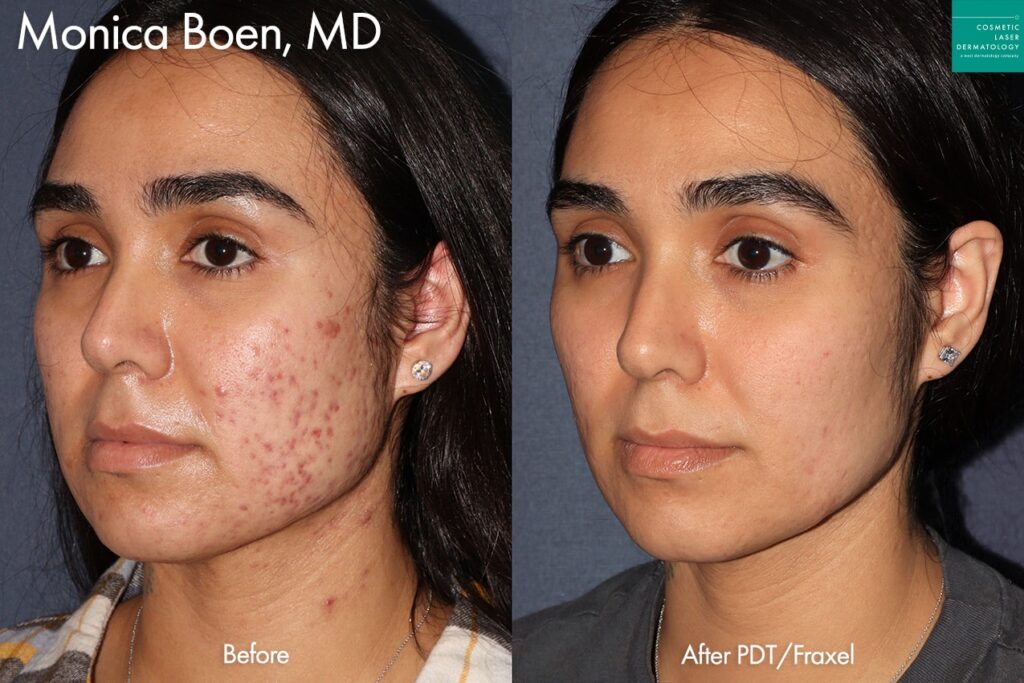Exactly How to Treat Acne Scars: Proven Approaches for a Perfect Skin
Checking Out Skin Conditions: Dealing With and identifying Acne Scars for Healthier Skin
Acne scars represent a substantial concern for people looking for to keep healthy and balanced skin, as they can affect both appearance and self-worth. Understanding the various kinds of scars, from atrophic to hypertrophic, is necessary for identifying ideal therapy choices.
Comprehending Acne Marks

The body's all-natural healing procedure can lead to either atrophic scars, which appear as anxieties in the skin, or hypertrophic scars, which are elevated and arise from overproduction of collagen. Additionally, the mental toll of acne marks need to not be ignored; several people report feelings of shame, anxiousness, and decreased self-worth. This emotional problem can impact social communications and general lifestyle.
Attending to acne marks requires a thorough understanding of their formation and effect. Recognition of the potential for long-term consequences connected with untreated scars can motivate people to look for appropriate therapies. Early treatment and effective administration strategies can significantly boost skin look and improve psychological resilience, stressing the relevance of recognizing the intricacies bordering acne marks.
Types of Acne Marks
Acne scars can be classified right into distinct types, each displaying distinct qualities and needing specific treatment techniques. acne and acne scars treatment. The main kinds of acne scars include atrophic, hypertrophic, and keloid marks

Hypertrophic scars, on the other hand, are increased above the skin level and are the result of extreme collagen production during the recovery process. They usually remain within the boundaries of the initial acne sore. Keloid marks are similar yet prolong beyond the initial injury site, forming bigger, elevated locations that can be uncomfortable or itchy.
Comprehending these kinds of scars is important for selecting ideal therapy options. Various scars may react far better to particular therapies, such as laser treatments, fillers, or surgical interventions, highlighting the value of a customized technique to acne scar management.
Determining Your Marks
Acne scars typically drop right into 2 classifications: hypertrophic and atrophic marks. These can even more be identified into ice-pick scars, boxcar scars, and rolling marks, each showing unique characteristics and needing various methods for analysis.
Hypertrophic marks, on the other hand, are raised and happen because of extreme collagen manufacturing throughout the healing procedure. Recognizing the details features of your scars-- such as size, structure, and depth-- is crucial for proper identification (skin rejuvenation treatments). Furthermore, think about the distribution of marks throughout your skin, as this can show the seriousness and duration of the acne problem
Engaging with a skin doctor can give useful understandings right into the nature of your scars, helping in the distinction between various types. A detailed understanding of your scars will ultimately cause a more customized and reliable therapy strategy, making certain a clearer and healthier skin tone.
Treatment Alternatives Available
Identifying the specific sort of acne marks present on your skin prepares for discovering reliable therapy choices. Common sorts of acne marks consist of atrophic (depressed), hypertrophic (increased), and post-inflammatory erythema.
For atrophic marks, options such as chemical peels, microneedling, and laser resurfacing are commonly used. Chemical peels off make use of acids to get rid of the external layer of skin, advertising brand-new cell development.
Hypertrophic marks can be treated with corticosteroid shots to flatten the scar or laser treatment to lower redness and boost look. Silicone gel sheets and pressure dressings may likewise help in taking care of increased scars.
On top of that, facial fillers can briefly complete anxieties from atrophic scars, while surgical excision may be suitable for extreme instances. Each treatment alternative has its benefits and his comment is here factors to consider, making it Get More Information necessary to speak with a skin specialist. They can provide tailored referrals based upon the kind and intensity of your marks, in addition to your skin kind and overall health.
Tips for Prevention
Effective prevention methods can substantially lower the chance of establishing acne scars. Making use of non-comedogenic items helps avoid clogged up pores, which can aggravate acne.
Staying clear of need to pop or pick acne lesions is important, as this can cause much deeper skin damage and raise the risk of scarring. Rather, consider utilizing a chilly compress or non-prescription treatments to minimize swelling and redness.
Sunlight security is an additional important facet of prevention; ultraviolet (UV) rays can dim marks and prevent the recovery procedure. Applying a broad-spectrum sunscreen with a minimum of SPF 30 daily can safeguard the skin and promote also recovery.
Finally, keeping a balanced diet plan abundant in minerals, vitamins, and antioxidants supports skin health and recovery. Remaining hydrated and managing stress degrees can additionally play a significant duty in decreasing acne flare-ups. By applying these techniques, individuals can dramatically minimize their opportunities of establishing acne marks.
Final Thought
In conclusion, understanding and determining acne marks is essential for reliable therapy and accomplishing much healthier skin. Numerous types of acne scars, consisting of atrophic and hypertrophic scars, necessitate details interventions customized to individual needs.
The body's natural healing process can result in either atrophic scars, which appear as clinical depressions in the skin, or hypertrophic scars, which are raised and result from overflow of collagen. They are further split right into 3 subtypes: ice choice scars, boxcar marks, and rolling scars. Acne scars this post typically drop into 2 categories: hypertrophic and atrophic scars. These can additionally be classified right into ice-pick marks, boxcar marks, and rolling marks, each displaying distinct characteristics and needing different approaches for assessment.
Numerous kinds of acne scars, consisting of hypertrophic and atrophic marks, require details interventions tailored to private requirements.